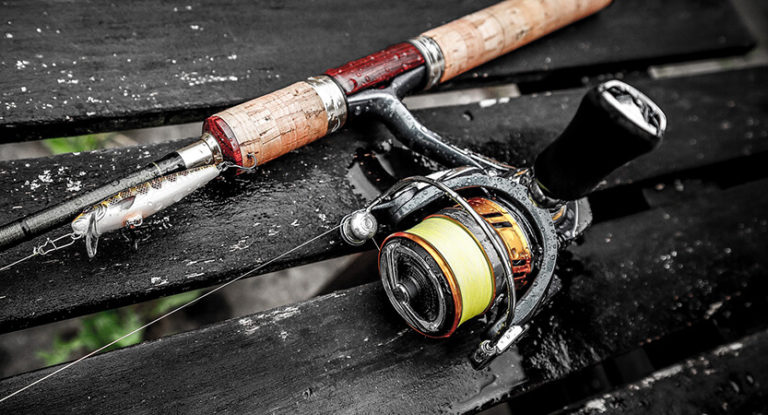Moray eels belong to the eel-like squad. The moray eels family includes about 90 species, according to some other sources there are more than 200 of them. There are known species that can live not only in sea salty, but also in fresh water. The distribution range covers the tropical and, in part, temperate zone. The appearance of moray eels is quite frightening. They have a massive head with a large mouth and an elongated serpentine body. On the jaws there are large, sharp teeth, gill covers are reduced, and instead of them there are small holes on the sides of the head.
Here is an overview of the content of this tutorial, feel free to jump to any section you care about:
For more fishing instructions, take a look at these popular Trizily links: Capelin Fishing, Peacock Bass Fishing.
- The 7 best fishing sunglasses 2022
- The 7 best underwater fishing cameras 2022
- The 10 best fish finders for the money 2022
- The 7 best baitcasting reels 2022
Moray Eel Fishing
Characteristics and habits of moray eel
The body of moray eels is covered with a layer of mucus that protects the fish, but it can be dangerous to others. From contact with some types of moray eels in humans, chemical burns can form on the skin. The location of the teeth and the oral apparatus in general are quite complicated and specialized for hunting in cramped conditions of rocks. A moray eel bite is also quite dangerous for humans.

Moray eels differ from most fish by the absence of pectoral fins, while the dorsal and caudal fins form one fin fold. Coloring and sizes vary greatly. Sizes can be from a few centimeters to 4 m. A giant moray eel can reach a weight of more than 40 kg. The color is associated with a lifestyle and is protective in nature, although some species can be considered quite bright. Fish are very voracious and aggressive, they are characterized by an unpredictable disposition. Many scientists have repeatedly noted the presence of a certain level of intelligence in these fish, in addition, the habits of fish are known when they selectively relate to certain species of animals with which they entered into symbiosis and do not prey on them.
They lead an ambush lifestyle, but can attack their victim from a fairly long distance. Moray eels eat various inhabitants of the bottom layer, crustacean medium-sized fish, echinoderms and others. Most species live at shallow depths, which is why they have been familiar to humans since ancient times. The main habitat of moray eels is various reefs and coastal underwater cliffs. It does not form large clusters.
Reproduction habit of moray eel

During spawning, moray eels form large clusters, which is almost never found in ordinary life. Maturity occurs at the age of 4-6 years. It is known that fish have a similar development cycle of larvae like eels. The larva is also called leptocephalus. In addition, it is known that some species of moray eels are hemataphrodites, changing sex during life. Most species are dioecious.
Moray eel fishing: Techniques, bait and gear
Moray eel fishing techniques
Residents of the Mediterranean have been catching moray eels since ancient times. Because of their appearance, moray eels are described in various terrible legends and myths of coastal peoples. At the same time, fish are actively eaten. Commercial fishing is not carried out. Catching moray eels is easy enough. When fishing from a boat, any simple vertical equipment using natural baits will do for this. In addition, for successful fishing, it is necessary to lure fish with bait in special feeders.
Catching moray eels on bottom fishing rods
Catching moray eels, despite its simplicity, requires certain skills and knowledge about the habits of fish. In the northern Mediterranean, such fishing is quite popular and widespread. To do this, use various bottom fishing rods. One of the options can be based on relatively long, up to 5-6 m, “long casting” rods. The weight characteristic of forms can correspond to 200 g or more. Reels should have voluminous spools to accommodate thick lines. Most moray eel fishers prefer fishing rods that are tough enough.

It is believed that moray eels offer very strong resistance, and so that it does not confuse gear, it is necessary to force survival. For the same reason, gears are equipped with a thick monofilament fishing line (0.4-0.5 mm) and powerful metal or Kevlar leashes. The sinker can be installed both at the end of the tackle, and after the leash, in the “sliding” version. In the case of fishing in shallow water, it is better to choose evening and night time. If you fish in deep holes, for example “plumb”, away from the shore, you can catch in the afternoon.
Moray eel fishing bait
The bait can be a live small fish or sliced meat from marine inhabitants. The bait must be fresh. Various small sardines, horse mackerels, as well as small squids or octopuses are suitable for this. For cutting meat of any mollusks or sea urchins is quite suitable.
Where to catch moray eel
Moray eels are inhabitants of the tropical and temperate coastal zone of the oceans of the World Ocean. They are found in the Indian and Atlantic oceans. Widely distributed in the Mediterranean and Red Seas. They usually live at depths of up to 30 m. They lead an ambush lifestyle, hide in crevices of rocks, in reefs, as well as in artificial underwater structures. During the hunt, they can sail far enough from the place of ambush.






